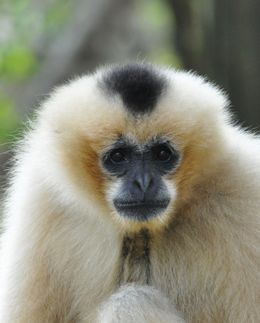Rapid genome analysis of a Whippet sighthound sets new standard for biodiversity research
“We are demonstrating that we can obtain and analyse complete genome information in a matter of days – not months”
The continuing global loss of biodiversity is making it increasingly necessary to rapidly collect and analyse genetic information on endangered species. In a joint project, the Department of Human Genetics at Bioscientia Institute for Medical Diagnostics GmbH in Ingelheim am Rhein and the LOEWE Centre for Translational Biodiversity Genomics (LOEWE-TBG) in Frankfurt, both in Germany, have sequenced and analysed the complete genome of a Whippet sighthound in less than a week. This advance could have a lasting impact on genome research in species and biodiversity conservation. The study has been published in the journal “GigaByte”.
The analysis of a Whippet genome, carried out jointly by the Bioscientia Institute and the LOEWE Centre TBG, used a new technology: whole genomes are sequenced very precisely and in long sections, so-called 'long reads'. This was achieved in record time using the example of the Whippet, one of the fastest land animals. This is not only a technical success, but was also initiated as a symbolic project to address the challenge of species extinction.
“We are demonstrating that we can obtain and analyse complete genome information in a matter of days – not months,” explains Prof. Dr Hanno Bolz, Head of Human Genetics at Bioscientia. The novel collaboration between Bioscientia’s human geneticists and the researchers at the LOEWE Centre TBG sets a new standard and provides an effective tool for biodiversity research.
Rapid analysis is increasingly important for the conservation of endangered species, as time is of the essence in the face of the rapid loss of biodiversity. “With such projects, we can quickly provide important genetic information on endangered species. This helps us not only to understand their evolutionary adaptations, but also to develop targeted conservation measures,” says Dr Carola Greve, head of the laboratory at the LOEWE Centre TBG. In addition to the Whippet project, another joint study by the two research partners on the endangered garden dormouse will be published shortly. Several other joint sequencing projects are already underway.
At the Bioscientia Institute's Department of Human Genetics, around 100 experts analyse thousands of genomes as well as the protein-coding regions of genomes, known as exomes, every year to identify the causes of rare genetic diseases in patients from all over the world. Bioscientia is the first laboratory to apply the innovative 'long read' genome sequencing method used in the sighthound study to human genetic diagnostics. This will make it possible to identify genetic diseases in humans more efficiently, with the potential to significantly improve treatment options.
Scientists at the LOEWE Centre TBG, based at the Senckenberg Society for Nature Research in Frankfurt am Main, Germany, are sequencing the genomes of many non-human organisms, from bacteria to whales. The information provides valuable information about plants and animals, many of which are endangered, as well as insights into their biological relationships, evolution and adaptations to environmental conditions. This benefits basic and applied research, including conservation management.
Original publication
Marcel Nebenführ, David Prochotta, Alexander Ben Hamadou, Axel Janke, Charlotte Gerheim, Christian Betz, Carola Greve, Hanno Jörn Bolz; "High-speed whole-genome sequencing of a Whippet: Rapid chromosome-level assembly and annotation of an extremely fast dog’s genome"; Gigabyte, Volume 2024, 2024-9-13
Original publication
Marcel Nebenführ, David Prochotta, Alexander Ben Hamadou, Axel Janke, Charlotte Gerheim, Christian Betz, Carola Greve, Hanno Jörn Bolz; "High-speed whole-genome sequencing of a Whippet: Rapid chromosome-level assembly and annotation of an extremely fast dog’s genome"; Gigabyte, Volume 2024, 2024-9-13
Topics
Organizations
Other news from the department science

Get the analytics and lab tech industry in your inbox
By submitting this form you agree that LUMITOS AG will send you the newsletter(s) selected above by email. Your data will not be passed on to third parties. Your data will be stored and processed in accordance with our data protection regulations. LUMITOS may contact you by email for the purpose of advertising or market and opinion surveys. You can revoke your consent at any time without giving reasons to LUMITOS AG, Ernst-Augustin-Str. 2, 12489 Berlin, Germany or by e-mail at revoke@lumitos.com with effect for the future. In addition, each email contains a link to unsubscribe from the corresponding newsletter.






















































